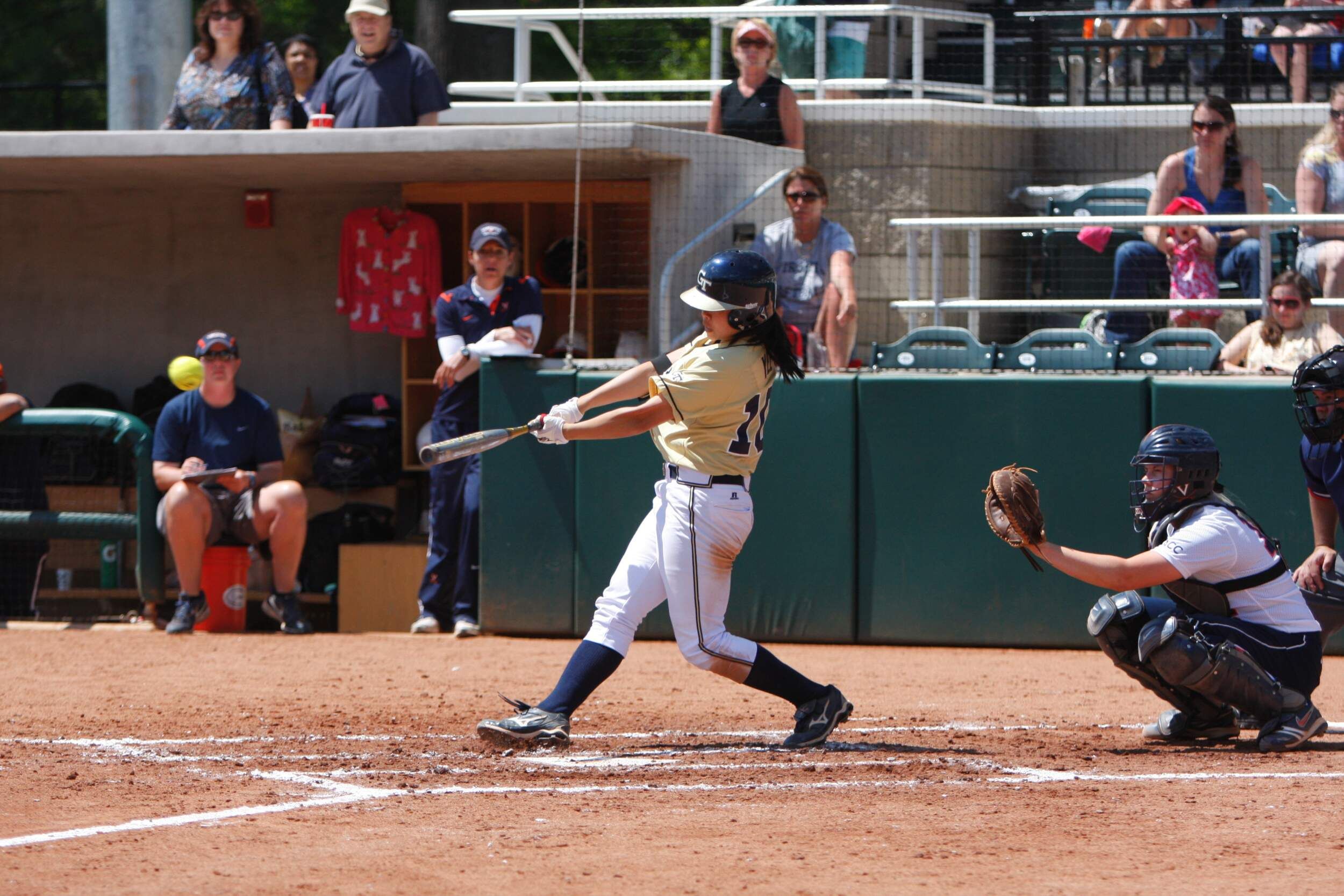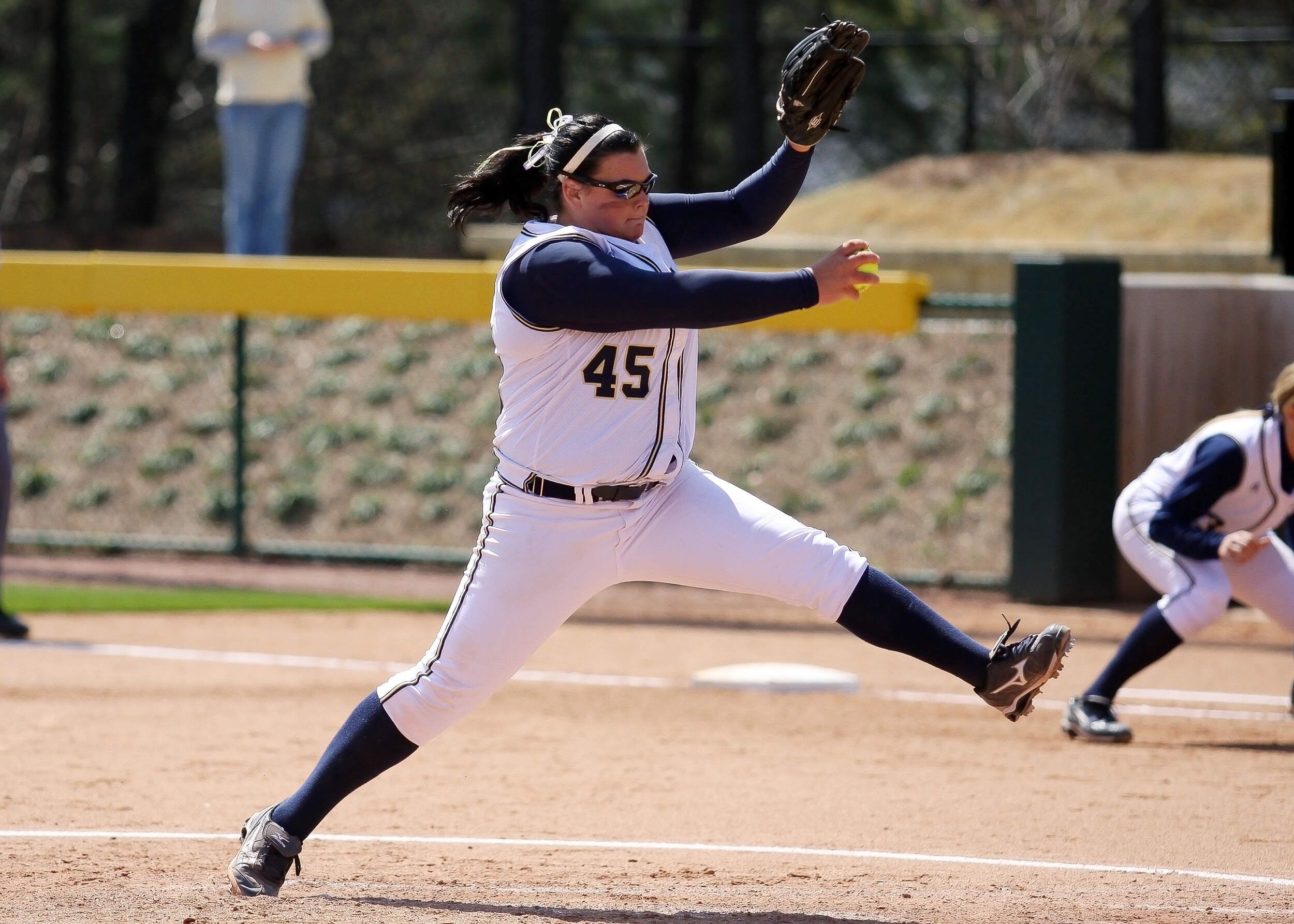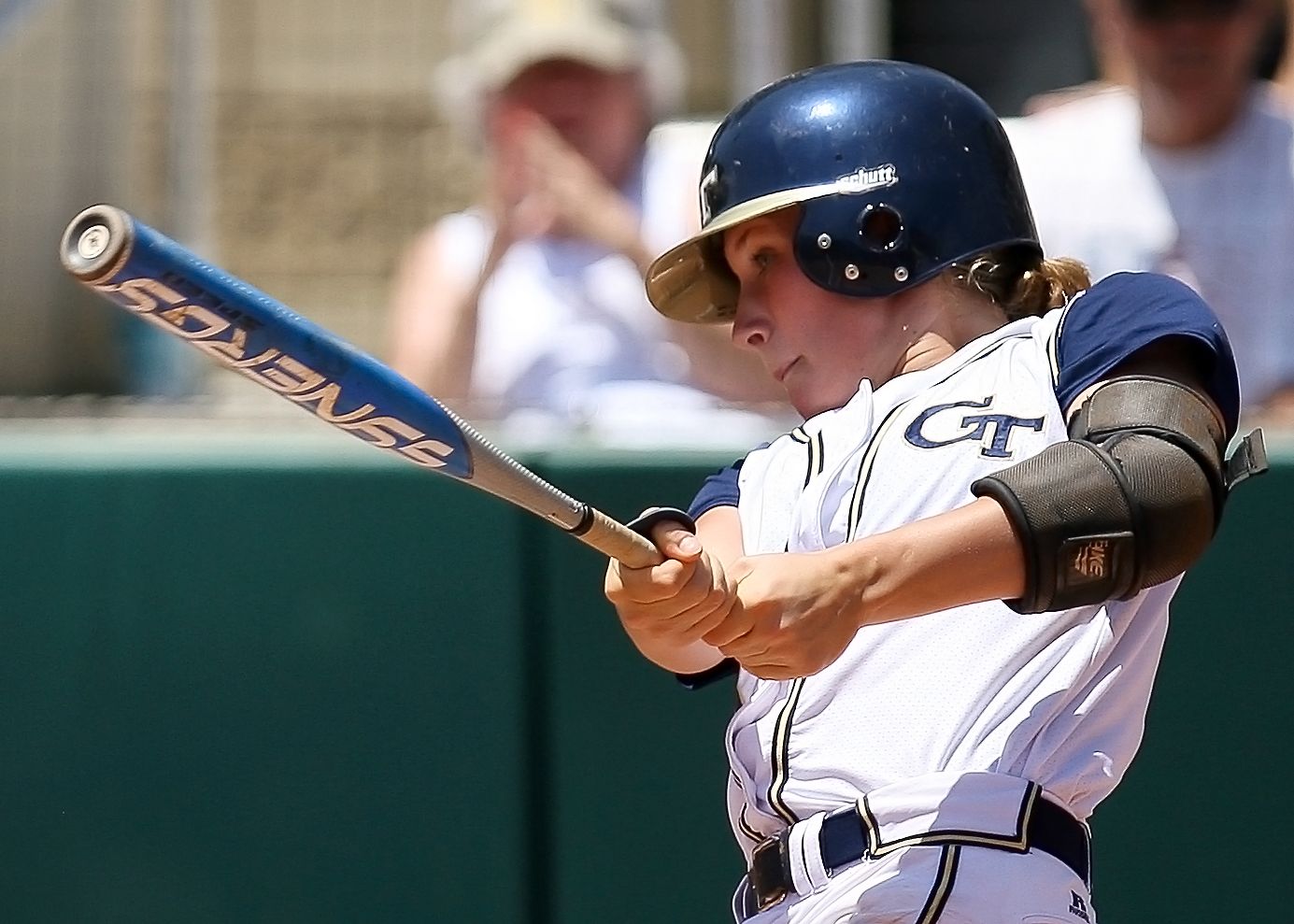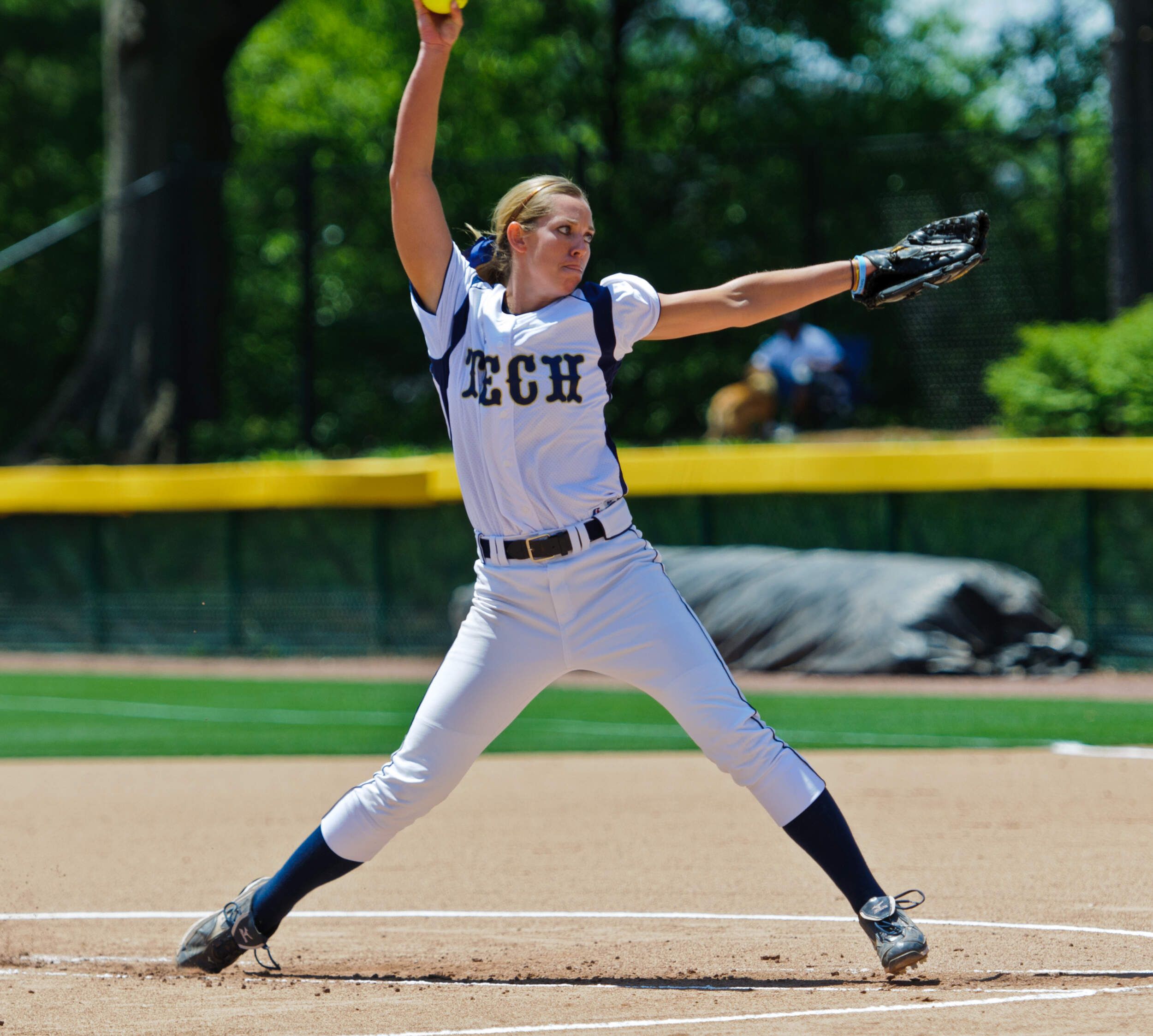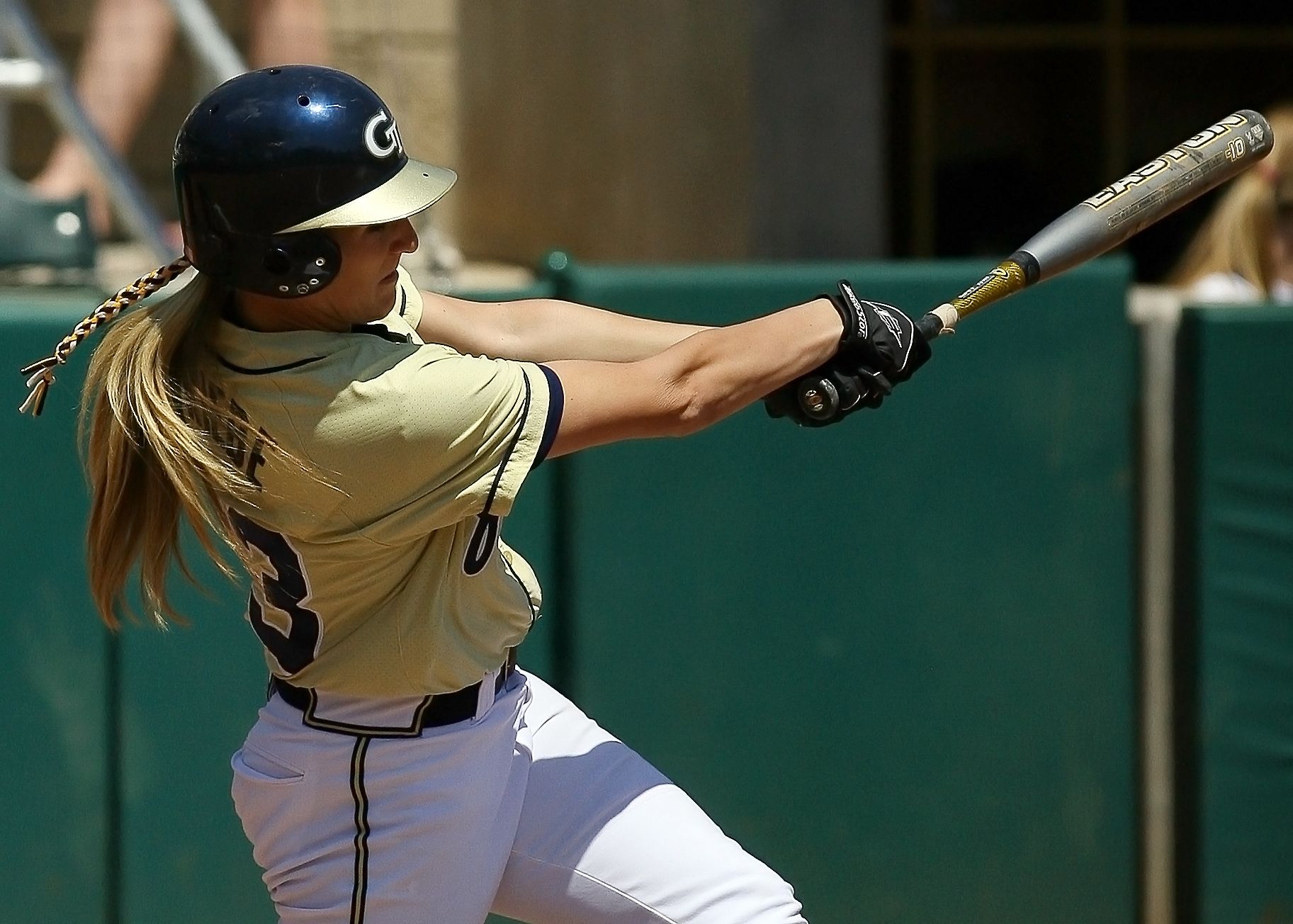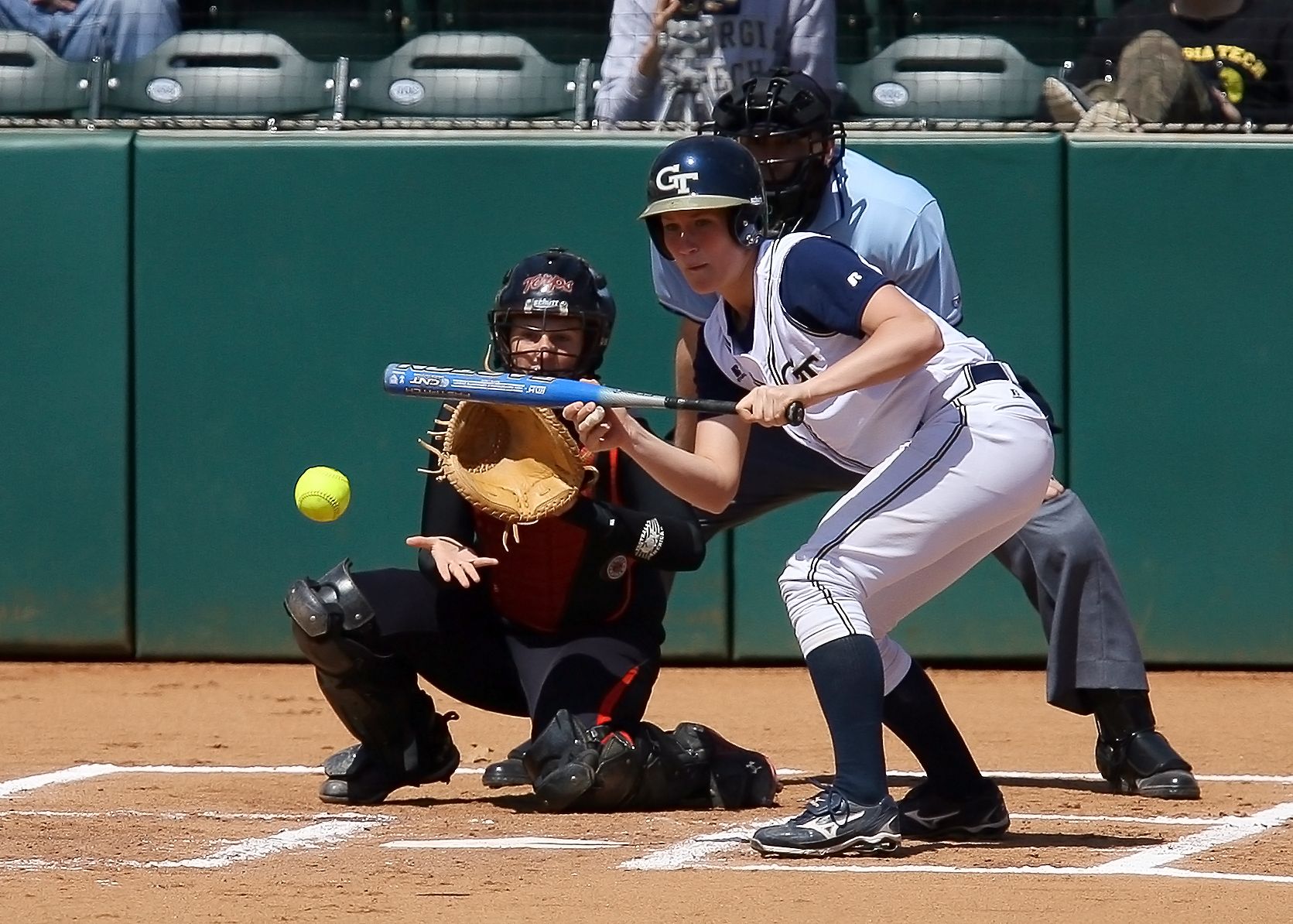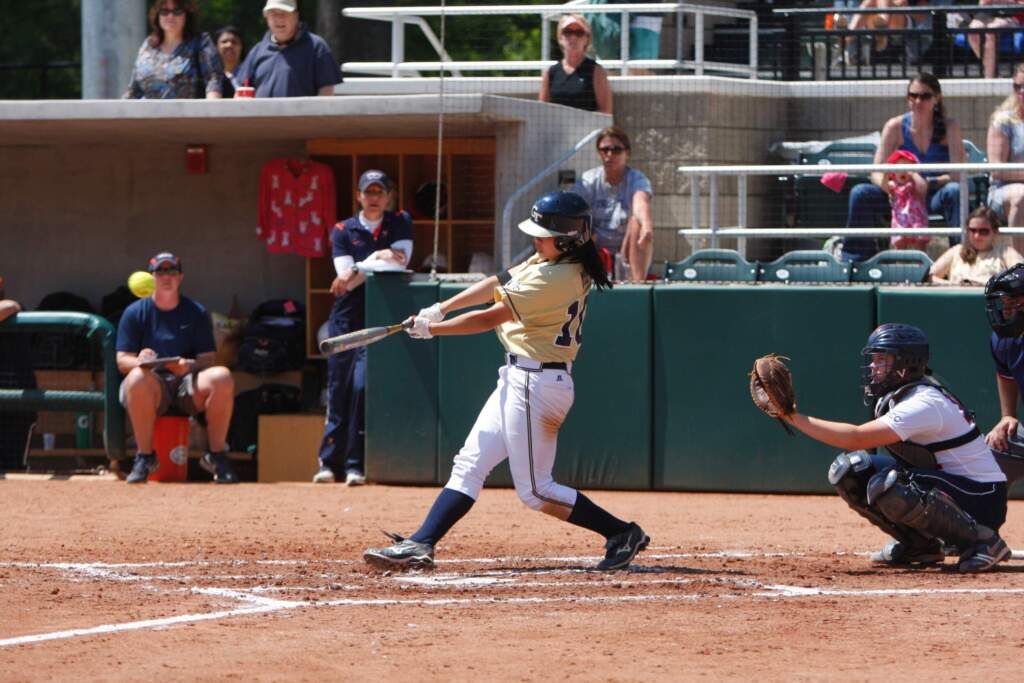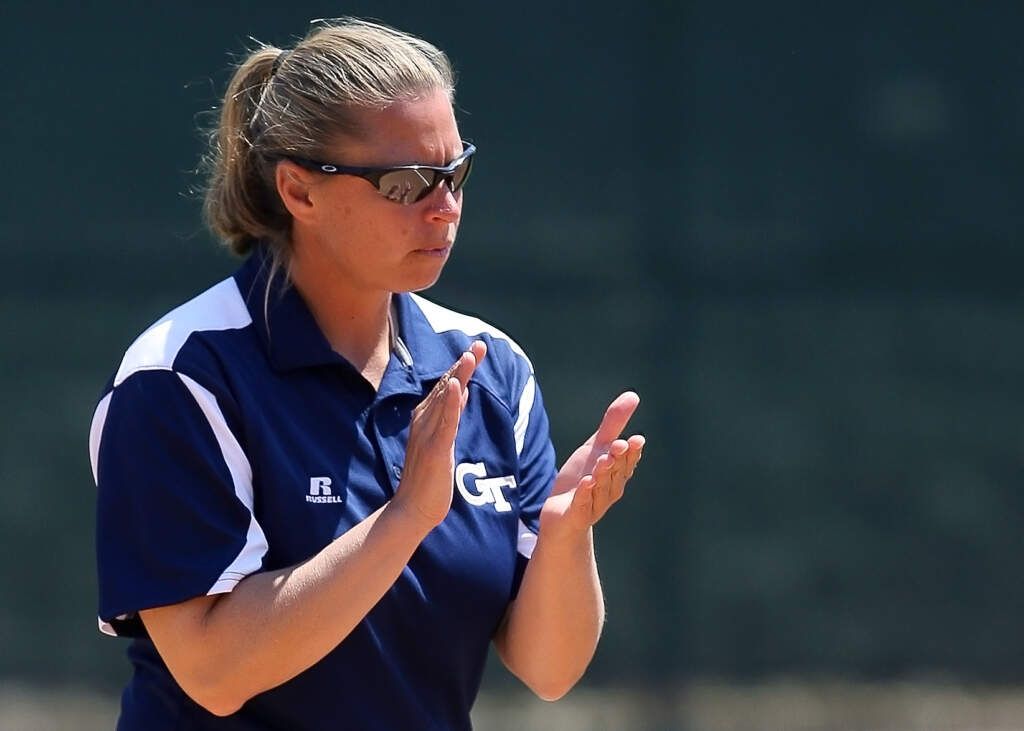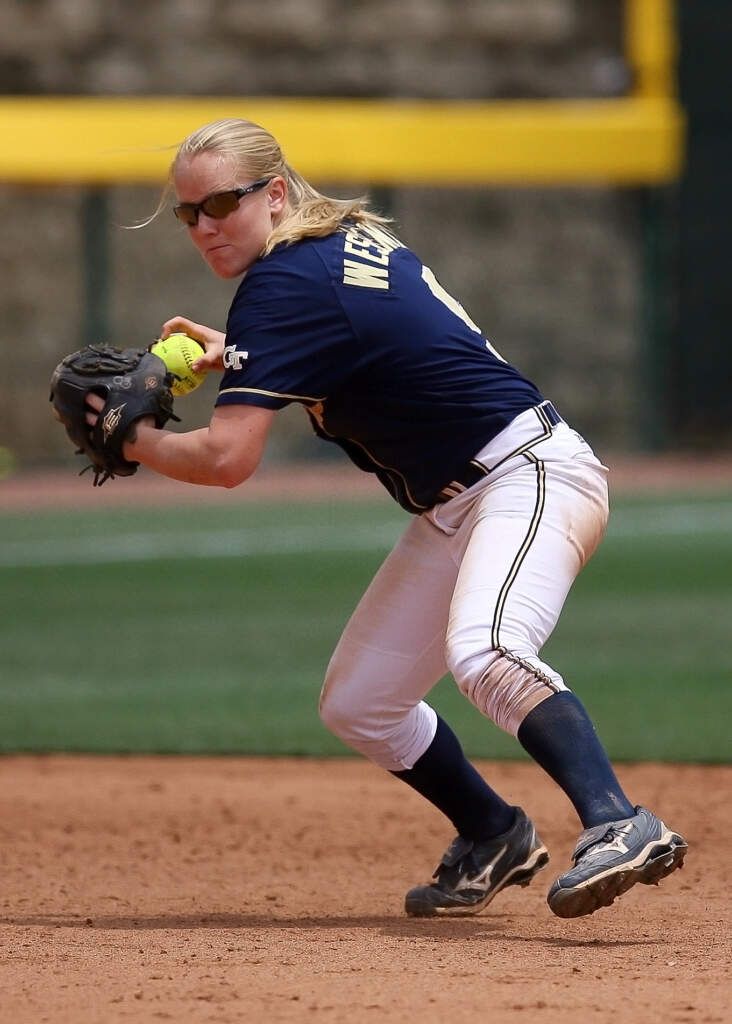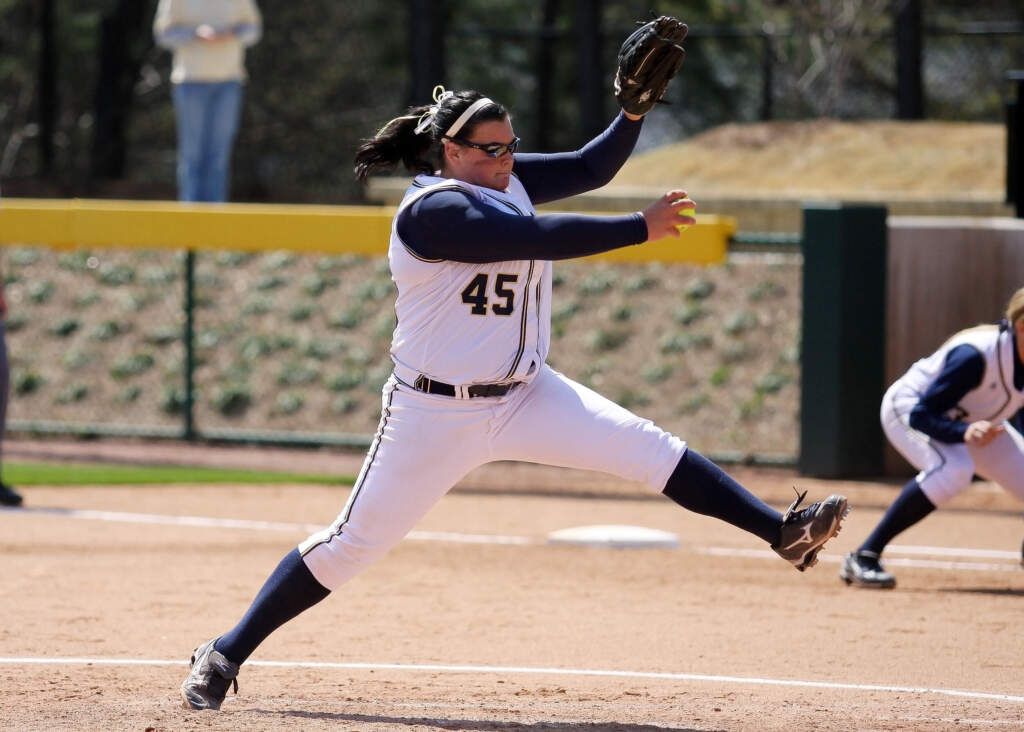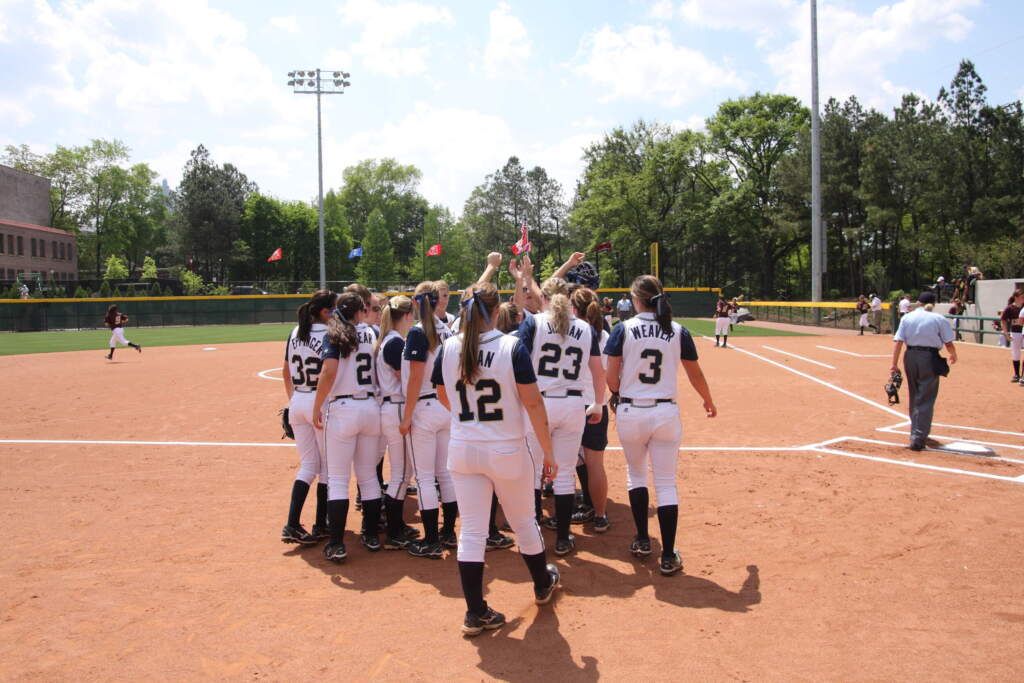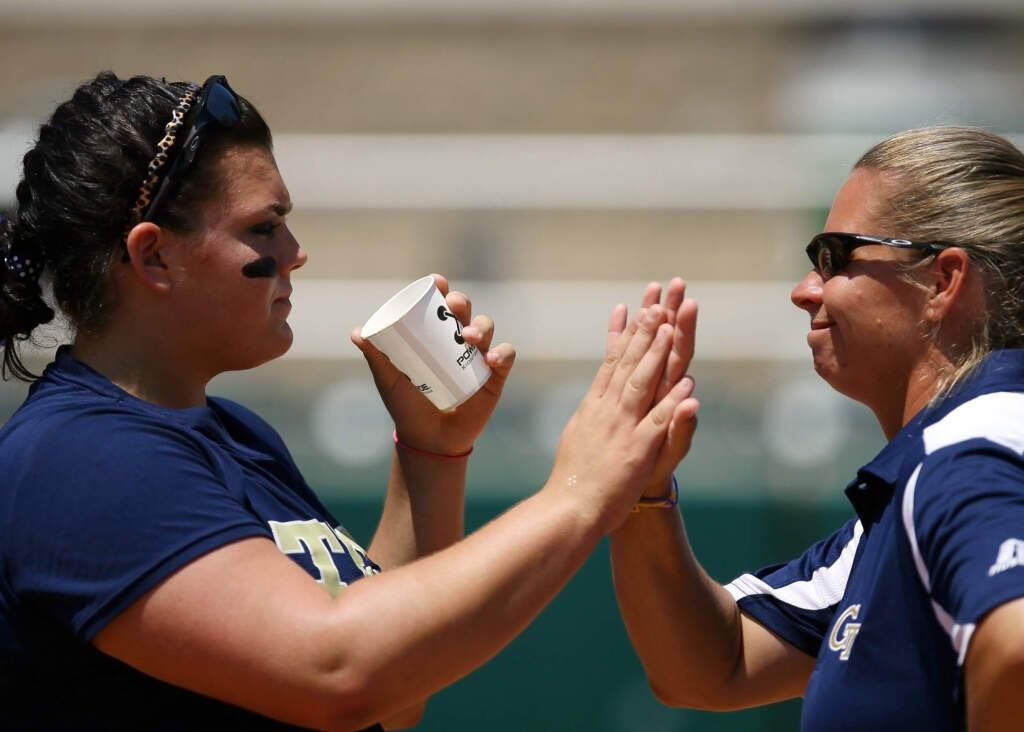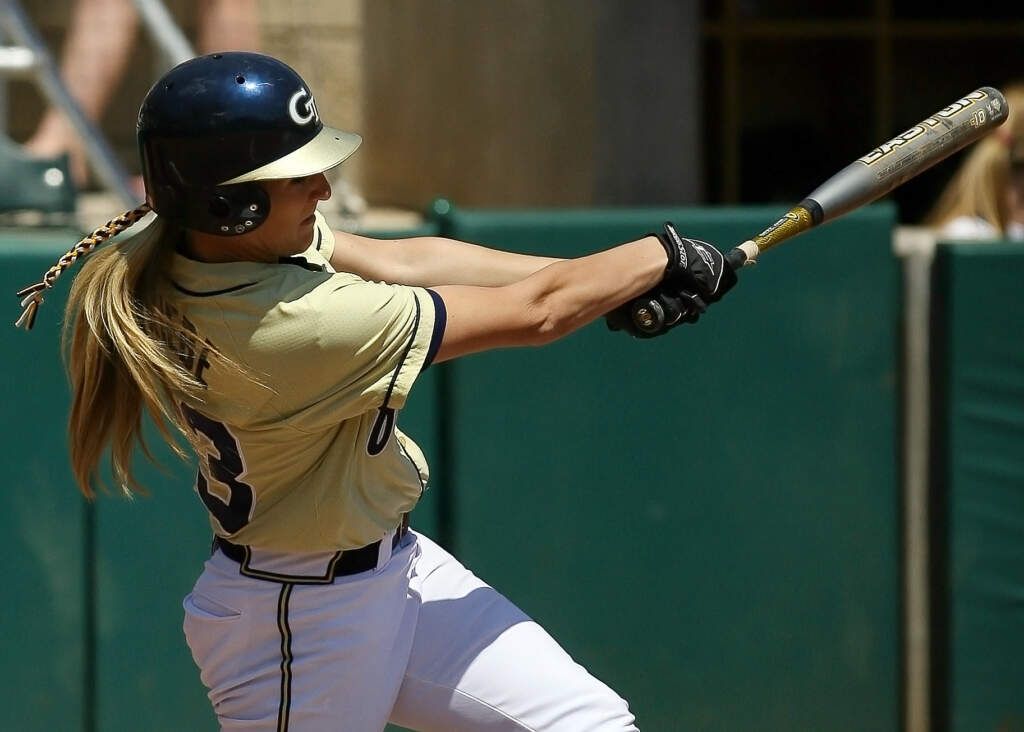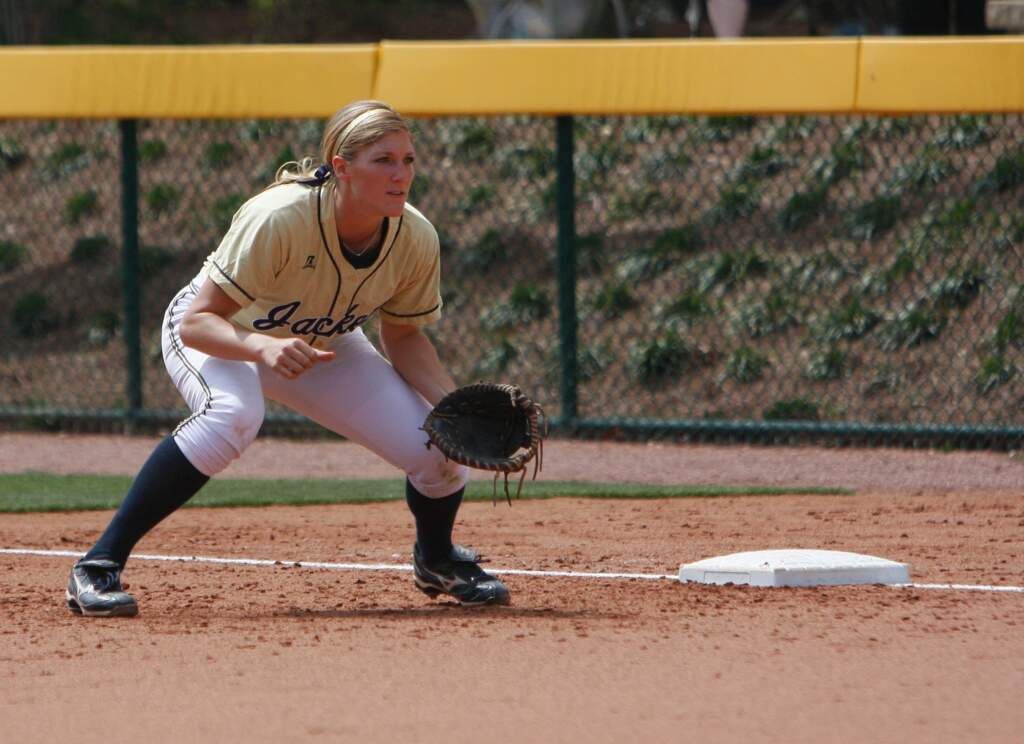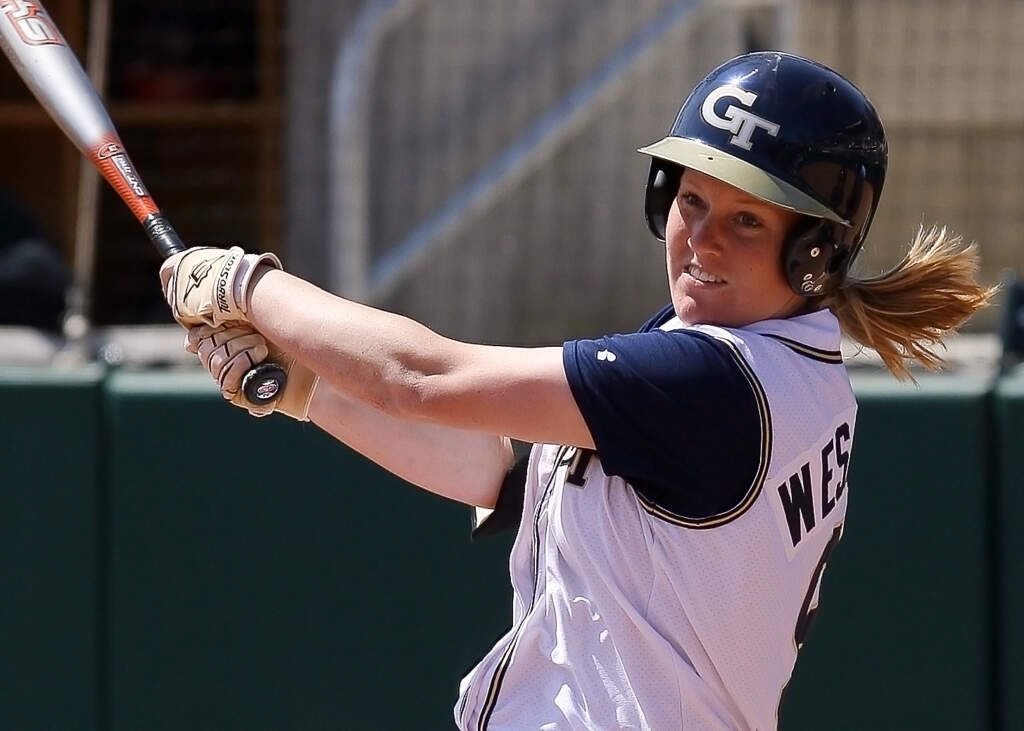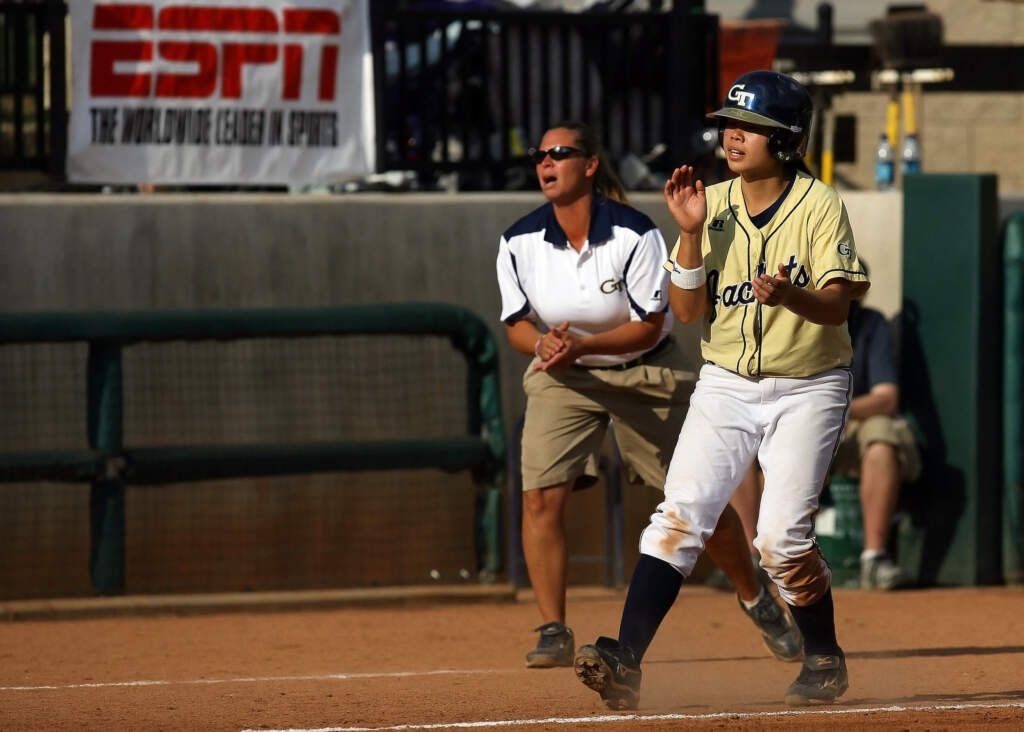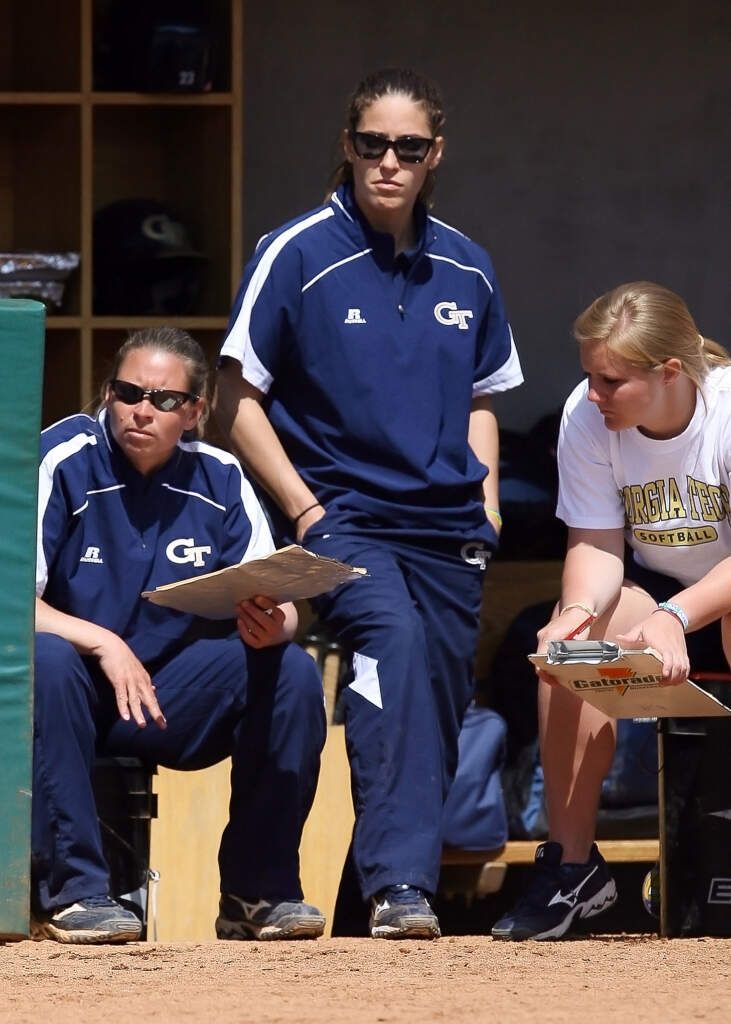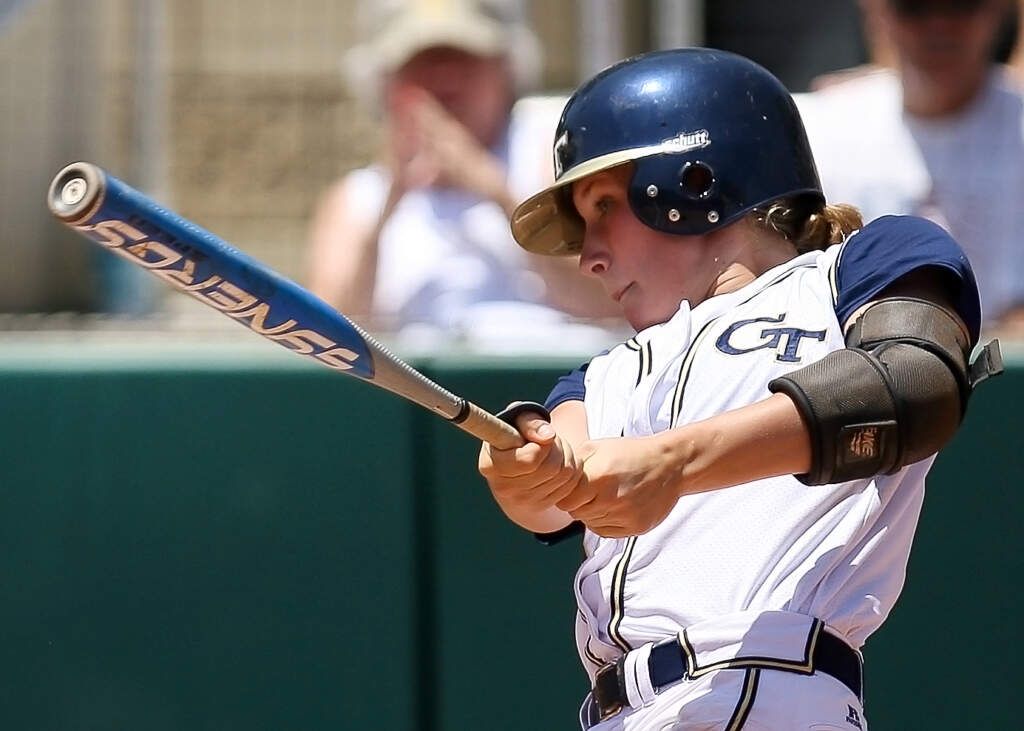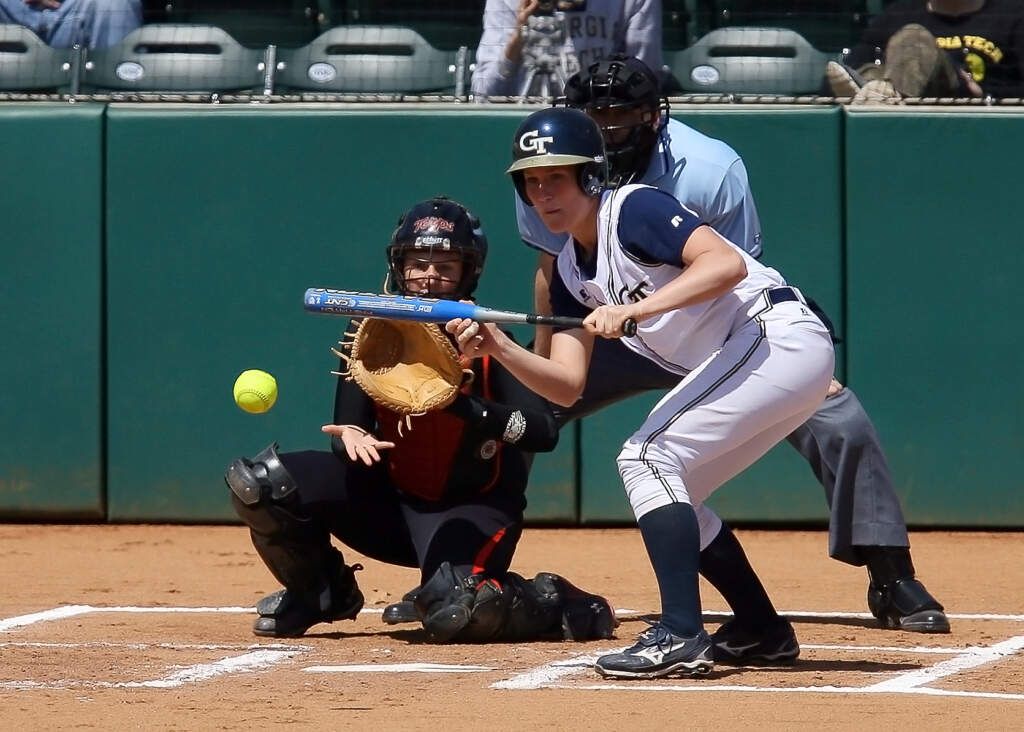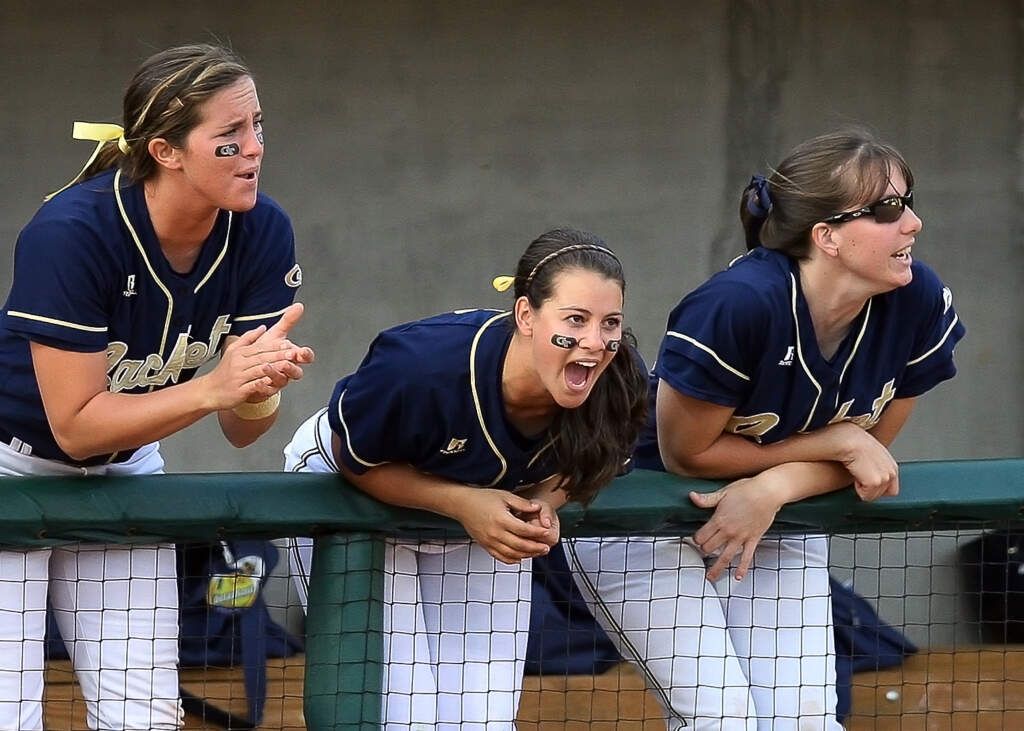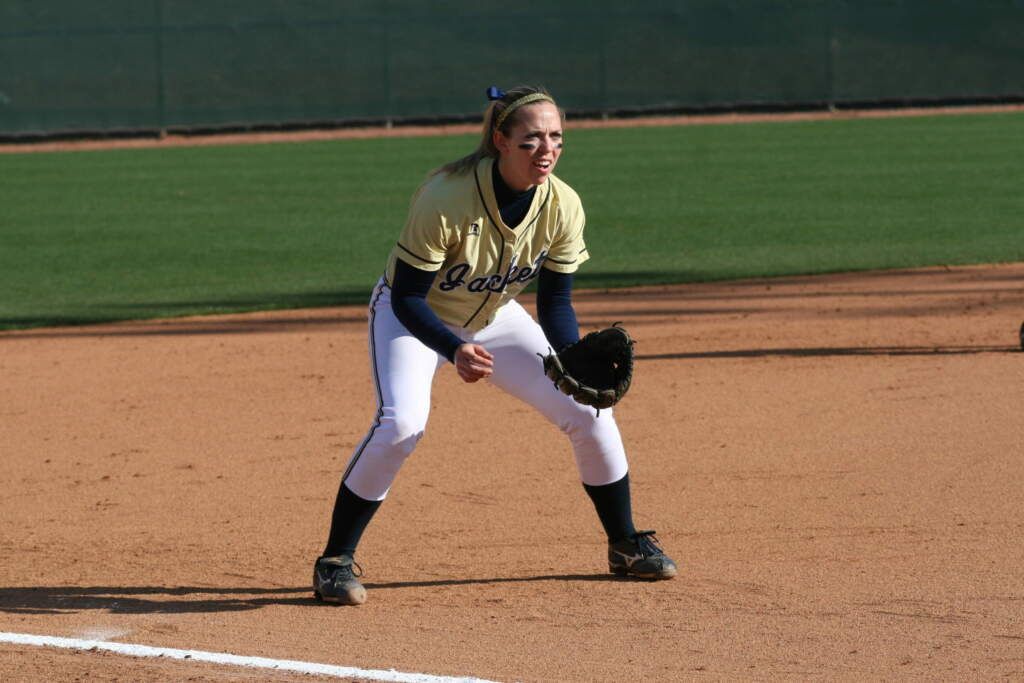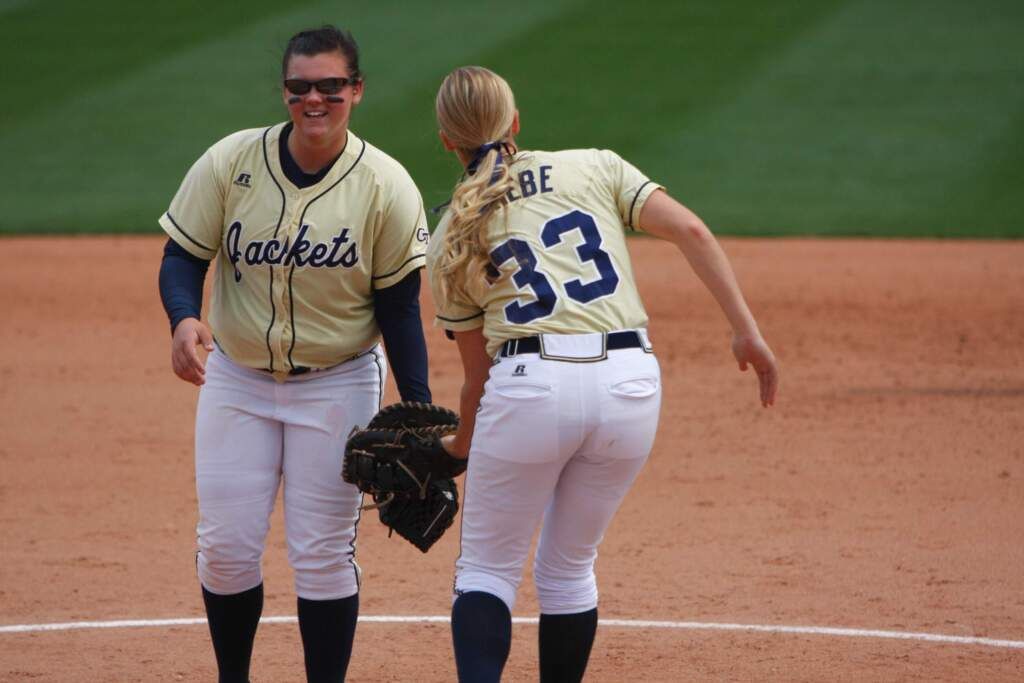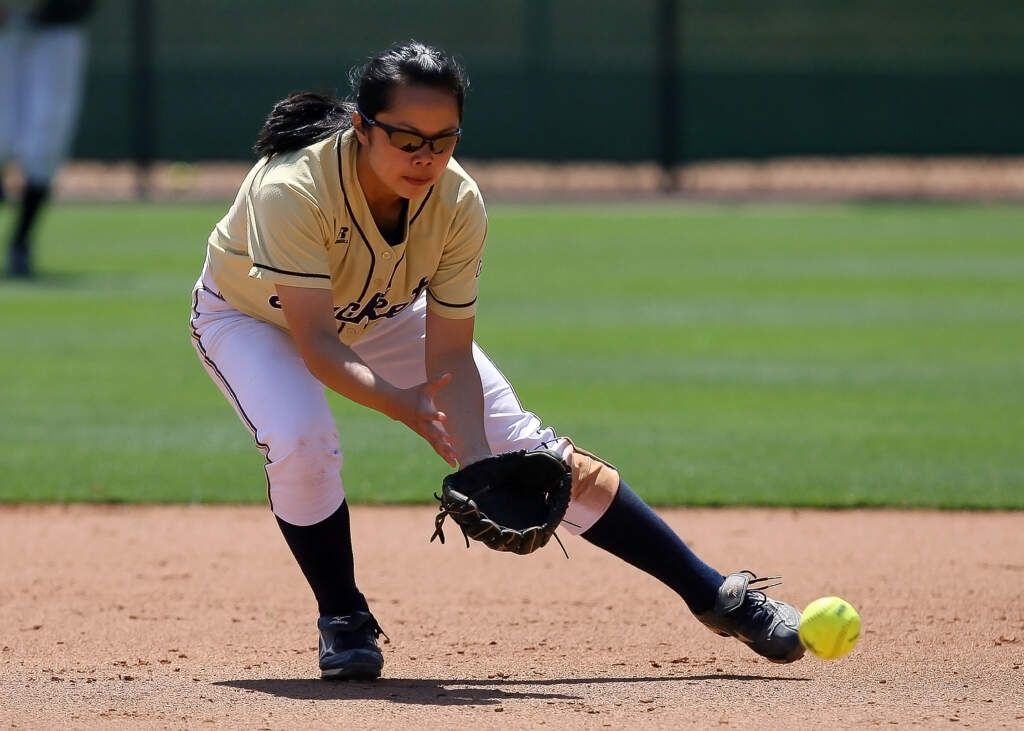By Jon Cooper | The Good Word
In 1984, Stanley Kubrick released the sequel to “2001: A Space Odyssey,” entitled “2010: The Year We Make Contact.”
Kubrick had no idea that 26 years later that title would perfectly fit Georgia Tech softball’s 2010 season. The Yellow Jackets made lots of contact that season, often performing in ways befitting a sci-fi movie, on the way to a 51-11 season and a 19-2 ledger in ACC play. They’d win all seven conference series, five of them via sweep, would sweep ACC regular-season and tournament championships for the second straight year, and host an NCAA Tournament Regional in consecutive years at Mewborn Field, where they were 20-4.
The Jackets were coached by Sharon Perkins, who would win her second of three straight ACC Coach of the Year awards, and whose staff included one of the most decorated Jackets in program history and current head coach, Aileen Morales.
The team featured an explosive attack that set a program record for home runs (118), led by a pair of First Team all-ACC and USA Softball Player of the Year candidates — one on each end of the experience spectrum. Redshirt senior Jen Yee, leadoff hitter extraordinaire and possibly the smartest hitter ever to come through Georgia Tech, who won ACC Player of the Year, and freshman Hope Rush (now Hope Rush-Songalia), who doubled as anchor of the devastating middle of the order, and ace of the loaded pitching staff, who won the ACC Rookie of the Year. Kate Kuzma (now Kate Kantor), who was Second-Team all-ACC, unselfishly enabled the offense out of the two-hole, creating RBI opportunities for the 3-4-5 punch of sophomore and 2009 ACC Rookie of the Year shortstop Kelsi Weseman (First-Team all-ACC), Rush-Songalia and junior first baseman and University of Florida transfer Kristine Priebe (First-Team all-ACC), while, defensively, catching Rush-Songalia, junior Kristen Adkins (now Kristen West), a UF transfer and 24-game winner the previous year, and super sophomore Jessica Coan.
It seemed like anyone who grabbed a bat for the Jackets was in scoring position for this home run-hitting machine and at some point, everybody contributed.
The Good Word caught up with Perkins, Morales, Yee, Rush-Songalia, Weseman, Kantor, West, and Priebe. Once they got over the initial surprise of the passage of time, all seemingly were transported back to the Flats during that magical season. They recalled the many heart-pounding moments and moments of exhilaration and pure joy.
The Amazing Jen Yee
Call her a “Yee-nomenon” or a “Jen-sation” or whatever you will, but one thing you had to call Yee, circa 2010, was “Unstoppable.” She reached base in every game and set single-season program records for batting average (.568), home runs (29), slugging (1.270), walks (88), intentional walks (31, also an NCAA record), on-base percentage (.732), total bases (188) and runs (93). She’d lead the nation in average, runs (93), runs per game (1.50), slugging, walks, walks per game (1.42), and on-base percentage.
Kristen (Adkins) West: “She was one of a kind — probably the best hitter — I’ve ever had the opportunity to play with. She was so studious about the game and she made adjustments on the fly better than I’ve ever seen anybody make. She was able to go — not just in between at-bats, but in between pitches — in the middle of an at-bat, and make an adjustment and the next time that pitcher threw that same pitch, she’d just knock it over the fence or square it up for a double. She was incredible.”
Hope Rush-Songalia: “Through four years of competing in college ball, I never faced someone like her. How she just broke down each pitch when she was up to bat. It’s just insane, her knowledge of the game. I wanted her to challenge me. Because she would study me as a pitcher. I would be like, ‘I’m coming after you.’ Then after I’d be, ‘Okay, what did you see from there?’ I loved and respected Yee and still do. I definitely was listening to what she had to say.”
Sharon Perkins: “I caught some flack to hit Yee in the middle of the lineup because she’d be a big RBI producer. But if she’s the leadoff she’s getting more at-bats than anybody else on the team. If we can start off with a baserunner — she’s going to hit a single or she’s going to walk, hit a double or hit a home run — then let’s put her in that position and force their hand.”
Aileen Morales: “Yee was insanely good. She put the team on her back every game. We ended up moving her up so we would get the most opportunities to swing away, because she was our best bat. If they were going to pitch around her they were going to have a runner on with no outs to start the ballgame off. She was a good calming leader. She wasn’t as vocal but she’d lead by example.”
Kristine Priebe: “Yee was so intelligent on and off the field and her game-smarts definitely gave our team the opportunity to do well, especially early on in games. She was always on base, so it really took the pressure off of you. When you know somebody is always going to be on base it lets you relax a little and, obviously, when you’re relaxed you perform better.”
Jen Yee: “I remember 2010 was like ‘YOLO.’ (Laughs) This is just my victory lap.’ There wasn’t really pressure that I put on myself and, like many things, when you don’t put pressure on yourself and you’re just kind of free and doing what you love for fun, you end up performing better. It was like, ‘This person doesn’t have anything on me. This isn’t hard. I shouldn’t make this difficult. A pitcher’s a pitcher.’
Kate (Kuzma) Kantor: “There was one game where Texas A&M tried pitching to her. We had gone a couple of ACC series where it was just common knowledge, ‘They’re going to intentionally walk her.’ They tried pitching to her. She hit a home run (on the game’s second pitch). Whether she was intentionally walked or whether they pitched to her, she was going to make something happen. It’s an anomaly. It’s not something everybody gets to witness or play with. I was in awe watching her.”
Yee: “That was in the rain. I hit a change-up!! I remember their funny ritual of dancing in the stands, then the rain, this whole setting. I remember watching the pitcher in the rain and was like, ‘Oh, I’ve got the changeup.’ So I’m pretty sure that it was a changeup that went out.”
Hope Swings (and Pitches) Eternal:
There’s a lot that freshmen don’t know in making the jump from high school to D-I softball. Over the course of the 2010 season, Hope Rush-Songalia found that what she didn’t know didn’t hurt her — certainly not as much as it hurt opponents. Probably no one knew that when the 2010 team sought replacements for graduated slugger Whitney Haller and star pitcher Tiffany Johnson they’d find the answer for both in Rush-Songalia. In addition to her 20 homers, she won 28 games (tied for second all-time behind Jessica Sallinger’s 31 in 2004 and tied with Sallinger in ‘02 and ‘05), and threw three no-hitters (second behind Sallinger’s four in 2003), two coming against North Carolina, the second in the ACC Tournament semifinals.
West: “I think we all knew from the get-go, that she was going to be great. She was humble but she worked hard, she put a lot of pride in what she did. She was one of those quiet giants. Our job was to support her and to have her back because she certainly had ours.”
Kantor: “It was awesome actually getting to witness Hope’s freshman year and having Hope back in my life. We had played travel ball a couple of years prior so I knew her pitching style, I knew how to manage some emotions whenever things got tense. We’d talk before a game and she’d say, ‘If this pitch is called this is what it’s going to look like and where I’m going to throw it.’ It was really easy in the sense of a pitcher-catcher relationship.”
Morales: “Hope was just a great, gritty pitcher. Being as good as she was right out of the gate, you hope for that out of your freshmen but you don’t know if you’re always going to get that. Hope, in her first appearance as a freshman, beat Florida. What a cool statement!”
Rush-Songalia: “Pitching was always my passion, hitting was more of a relaxing thing, to take my mind off stuff from the mound. I knew I enjoyed it and I was pretty good at it. Hitting was when I could take my deep breath and kind of just separate pitching from hitting.
“I didn’t really know what I was getting into pressure-wise as a freshman. I didn’t really know the importance of it all. I just went out there and played, that was the good thing about it.”
On the no-hitters: “I think it goes back on what I didn’t know. I knew it was a big deal but I never really knew until someone on the team would be like, ‘Look, we’ve got a no-hitter’ and Yee would be like, ‘We’re not talking about it! We’re not talking about it!’ (laughs) I just went out there and pretty much just continued doing the same thing, try not to give up as many runs.”
The Bash Sisters
The 2010 Yellow Jackets put on an unprecedented power display, blasting 118 homers, obliterating the previous high of 96, set in 2007, nine of those grand slams (the previous season-high was four, also in 2007). Yee set a school record with 29 round-trippers, five more than Haller’s 24, set in 2006. Rush-Songalia added 20. It was a program record for most homers by a pair of teammates in a season and the duo out-homered five ACC schools. But they weren’t alone. Priebe smashed 15, including three grand slams, Weseman hit 12, and designated player/first baseman Caitlin Jordan and third baseman Danielle Dike each had seven.
Perkins: “We had a lot of power. It was crazy. It felt like we were hitting multiple home runs every game. We had Weseman and Priebe, Hope Rush(-Songalia), (Jessica) Sinclair, all these people coming up behind (Yee and Kuzma) had power and could hit.”
Rush-Songalia: “Yee and I had this ‘special’ bat. Our Easton bat. You know how everyone has their own rituals for sports, especially softball or baseball. Just thinking about the power, thinking about Yee, Kate, Priebe, Weseman, me, it’s just insane. Yee’s power alone, to this day, amazes me. It’s mind-blowing when you think about it.”
Yee: “The bat that we were using was probably released my sophomore year. It had that special color, that golden color. It was probably hers. She was letting me use it (laughs).”
“Maybe it was one of those things where you’re inspired by someone at practice, then it becomes ‘Home Run Derby.’ It was a super-fun roster, It’s probably the best-hitting team that I’ve been a part of.”
Morales: “(big laugh) We mashed! (Yee and Rush-Songalia) were scary! That year, the football team would come to the games and I remember Christy Jones (now Christy Blair), her husband, (former Georgia Tech place-kicker) Scott Blair, would have this whiteboard. It read, ‘Your team’s home runs’ however many, ‘Jen Yee’s home runs’ and Jen Yee’s home runs were greater than the other team’s. You’re like, ‘This is crazy!’
Also crazy was Priebe’s knack of hitting with the bases loaded. She was 6-for-9 (.667) coming up with the sacks full and three of those hits left the yard.
Priebe: “It was really fun, when the ball looked like a beach ball for a couple of weeks. Just the fact that I had so many opportunities to hit a grand slam in itself, that’s amazing, because you don’t have bases loaded all the time, and it would just keep happening.”
Aces High
For opponents, trailing right off the bat while knowing the Jackets’ ability to keep adding on made things difficult enough. Trying to forge a comeback against Tech’s trio of pitchers made the task even more herculean. Rush-Songalia (28-8, 2.55 ERA, 222 ⅓ innings), West (8-2, 2.95 ERA) and Coan (15-1, 3.16, 125 strikeouts in 85 ⅓ innings) were quite stingy, limiting opponents to four-or-fewer runs 51 times, going 47-4.
West: “We all had different strengths. It’s not like we were the same pitcher three times over. Because of that we lined up with different hitters and different teams in ways that really fit us and our defense.
Kantor: “Kristen had an amazing drop ball. She could place that right on the corner, six inches off the corner, and she was just very, very effective with that. I played against Jessica growing up. She was more of a rise ball, screwball, curveball pitcher. They really complemented each other. Hope dominated with a slow curve or an off-speed pitch that really just threw batters off. We didn’t have all curveball pitchers or all left- and right pitchers, up-and-down pitchers. We had pitchers that were specialized, above-average pitchers, that you could cycle through and the batters would be thrown off because it wasn’t the same type of pitches that they were getting from the previous pitcher.”
Perkins: “Batters don’t change their swings a whole lot. If a kid can’t hit a drop she can’t hit a drop. If she can’t hit a curve she can’t hit the curve. So I felt like going into that season we were pretty solid and we had three totally different types of pitchers. We could run one out there and if we needed to close with somebody we could. We were comfortable starting any of them.”
Everybody Gets Into the Act
While the top five hitters drew most of the attention, not paying attention to the bottom half and the players coming off the bench also would prove costly. Junior Caroline Hilton, sophomore Shannon Bear, sophomore Danielle Dike (who made 30 starts at third), and sophomore Jessica Sinclair all hit with power, and Blair’s slapping was crucial in turning over the order and re-starting the carousel. She’d score 31 runs (tied with Rush-Songalia for fifth on the team) but also delivered in the clutch, hitting .429 in RBI opportunities (second only to Yee), and had a .590 advance rate of baserunners (behind Yee and Kantor).
Yee: “Hitting feeds hitting. It’s like when you yawn, it’s contagious. An above-average hitter is going to hit better when there are powerful hitters around her. It’s like an impending avalanche. It’s like just wait until someone kicks it off and then it’s runs everywhere.”
Perkins: “The first weekend, we’re playing Florida, who was ranked (No. 3/5). That’s the highest-ranked win in program history at that time. It was (All-America pitcher Stephanie Brombacher’s) first career loss. We’re hitting home runs and getting hits off kids. It’s like, ‘Man, what’s happening here?!? We’re pretty dang good!’”
Weseman: “Even when we pulled somebody off the bench they were contributing just as much as the people that were in the lineup every day. So it was really cool to be a part of.
Rush-Songalia: “I wouldn’t have wanted to face that lineup (Laughs).
United We Stand
The 2010 team is the most recent to put up 50 wins and it was very much a tight unit.
Morales: “That team had great chemistry. They played for each other. Every time they stepped on the field, they knew they could win. So there was that confidence. That team was so invested in each other. ‘21 outs’ was a super-competitive drill that we did all the time. (The coaches’) job was trying to get them to make an error — make it really challenging. They were so competitive and driven in practices. You could just tell they took care of each other. If there was conflict on the team they handled it themselves. They respected each other enough to handle that on their own. A lot of that never even made it to the coaches. That’s the sign of a good team and good leaders.”
West: “We had great chemistry amongst the team — probably more fun with all of the teammates on that team than I ever had before with any of my other teammates in years in playing. I just remember the team being so dedicated to the craft and wanting to win so bad. The will to win was evident every practice and every game.”
Perkins: “We won every conference series. I’m guessing and we swept a ton of them, and it’s so hard. It’s hard to win a conference series because you’re facing the same people over and over and they know you and you know them. It’s so crazy. That conference was super-competitive and the schedule we were playing was a grind. But you don’t expect to come in and win (50). Really, you hope to win 40 games. So to win that many is pretty unheard of.”
- The 2010 Jackets never endured a losing streak and only three times lost two of three.
- In 38 games the Jackets never trailed.
- The Jackets run-ruled opponents 15 times, 12 of those in the minimum five innings. They would have run-ruled the entire ACC Tournament were it not for conference officials stepping in. GT beat Boston College and North Carolina by 8-0 scores in five innings and led Florida State 8-0 after five in the Championship game. Officials ruled the game must go the distance (a rule since changed). The Jackets won, 8-4.
- Tech didn’t duck anyone, playing 22 games against top-25 teams or teams receiving votes. They went 15-7 in those games.
- The 2010 Yellow Jackets appreciated the importance of scoring first. They outscored opponents 72-18 in the first inning, were 42-1 when scoring first, 27-1 when scoring in the first inning, and 26-1 when leading after the first inning.





